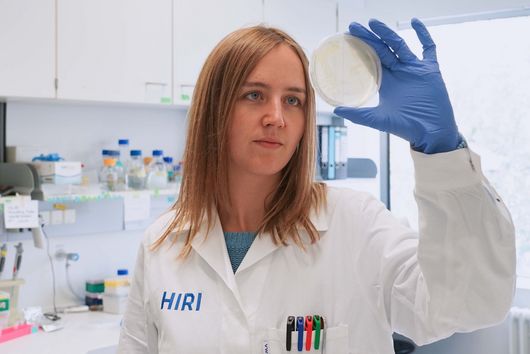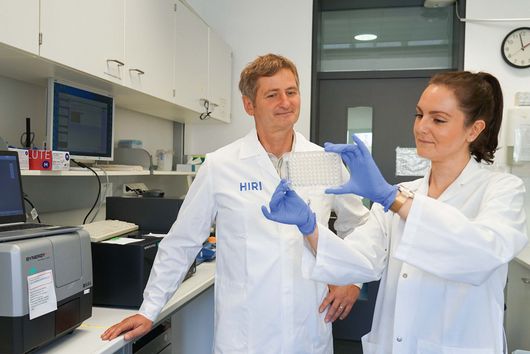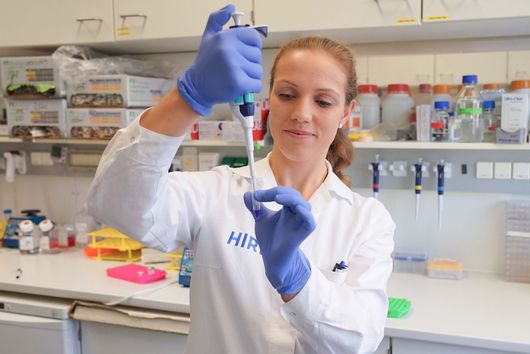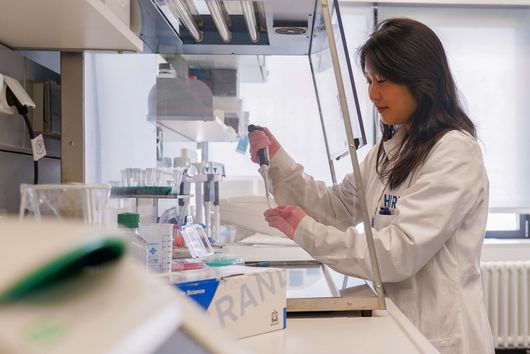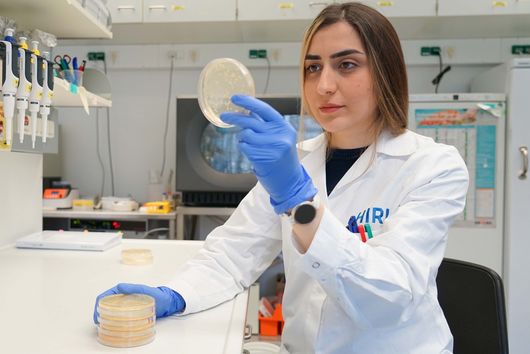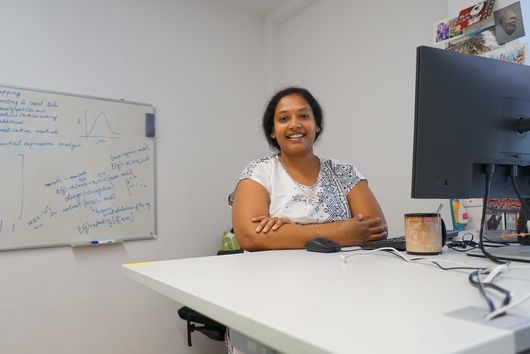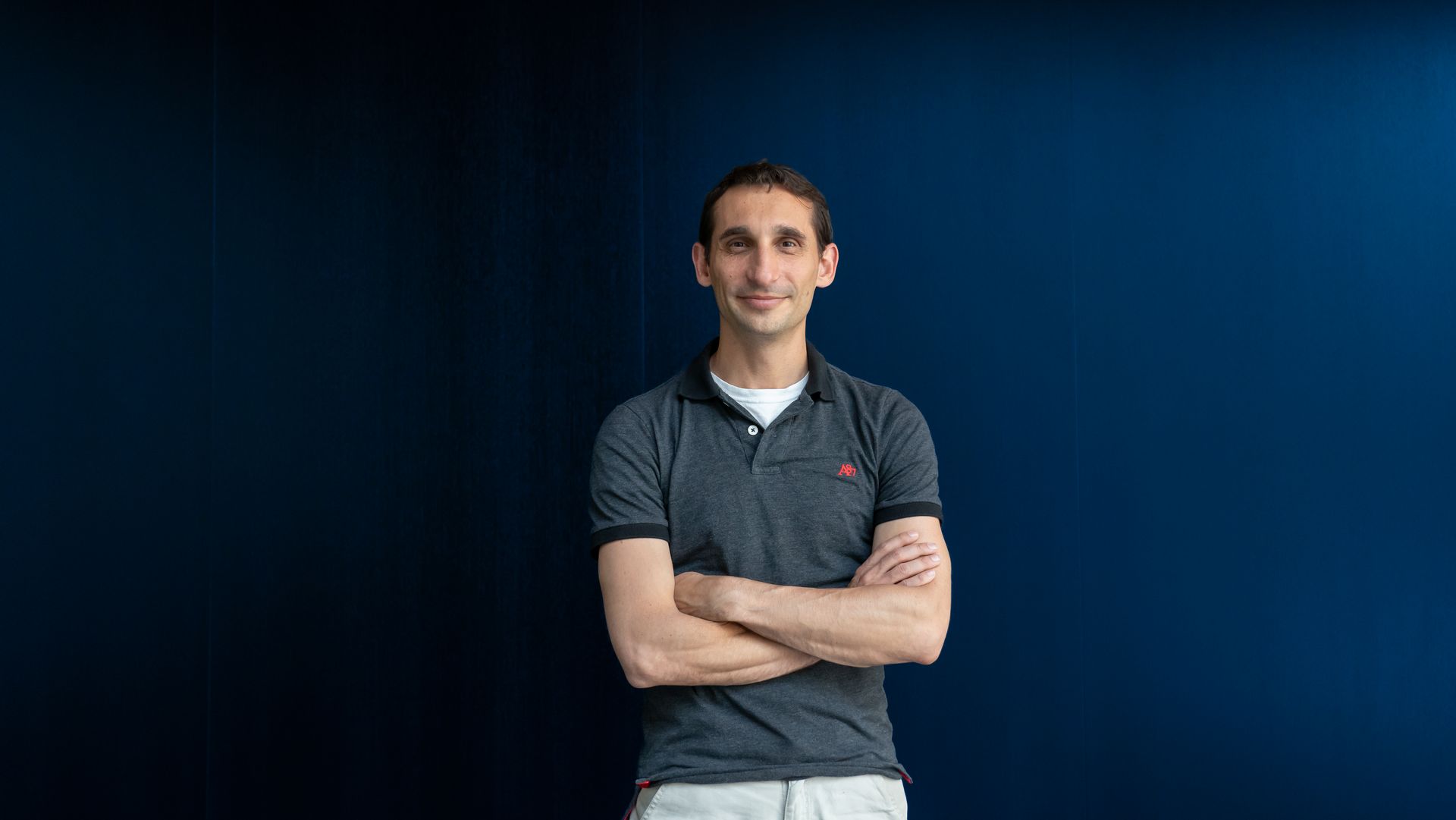
A day in the life of a gene engineer
RNA expert Chase Beisel develops new technologies
It is six o'clock in the morning. While others are still sleeping, Chase Beisel is already wide-awake. For the HIRI principal investigator, mornings are all about family. After he and his wife get his three daughters ready for school, Beisel mounts his bike. At around a quarter past seven, he heads to the Helmholtz Institute for RNA-based Infection Research (HIRI) on the Würzburg Medical Campus.
Since early 2018, the US-American is the head of the HIRI research department “Synthetic RNA Biology“. For this, he traded Raleigh, the capital city of North Carolina, USA, for tranquil Franconia. Beisel considers this a good decision: ”Its location along the Main river and its many sights make Würzburg a great city. While the city may not be one of the largest, it is a prominent place on the map with a lot of tourism. We get to enjoy the benefits of city life without being surrounded by too many people,” is how he describes his adopted home. For the internationally renowned scientist, one major advantage of Würzburg is its central location: ”Würzburg is well-connected. By train, it only takes an hour and a half to get to the nearest international airport. From there, I can fly almost anywhere.”
“CRISPR is like science fiction that has suddenly become reality.”
Chase Beisel

© HIRI, Sandy Westermann (SCIGRAPHIX)
Once he arrives at the HIRI, he first stops at his desk. There, he spends most of his working day. ”Be it meetings with students and cooperation partners or giving presentations: scattered throughout the day, I have many online meetings and spend quite some time sitting in front of the screen,” the scientist explains. Face-to-face meetings fill the gaps in an already busy schedule. Beisel appreciates the close exchange and short distances at the institute: ”I prefer doing research in a team rather than alone. In that regard, the HIRI offers one of the best environments that I can imagine.” In between meetings, Beisel regularly pays visits to his lab. The chemical engineer has devoted his research to the CRISPR gene scissors. ”CRISPR is like science fiction that has suddenly become reality. Yet, CRISPR was not developed in a lab but discovered in nature. CRISPR-Cas is an immune system of bacteria. The way the system remembers infections and recognizes pathogens is fascinating,” he explains enthusiastically. His research at the HIRI focuses on the functional diversity of CRISPR-Cas. Beisel aims to develop new CRISPR-based technologies for the diagnosis and treatment of infections. One of those technologies is LEOPARD. This method can detect multiple disease-related biomarkers in just one go, unlike a PCR test, which is limited to one marker per reaction. ”There is a good chance that CRISPR will eventually replace PCR tests since it is more accurate and faster,” the researcher says.
Beisel did not always see himself as a researcher: ”I had many plans, such as becoming an architect, artist, or musician. Ending up in research was unexpected but the best thing that could have happened to me.” Beisel still puts his artistic talent to good use today by creating illustrations for scientific publications.
Once his workday at the HIRI is over, Beisel gets back on his bike. This is another advantage that Würzburg offers, according to him: ”I have not been able to ride my bike to work since my postdoc days.” At home, his next meetings are often already scheduled. After all, due to the time difference, the day is only just beginning on the other side of the Atlantic.

